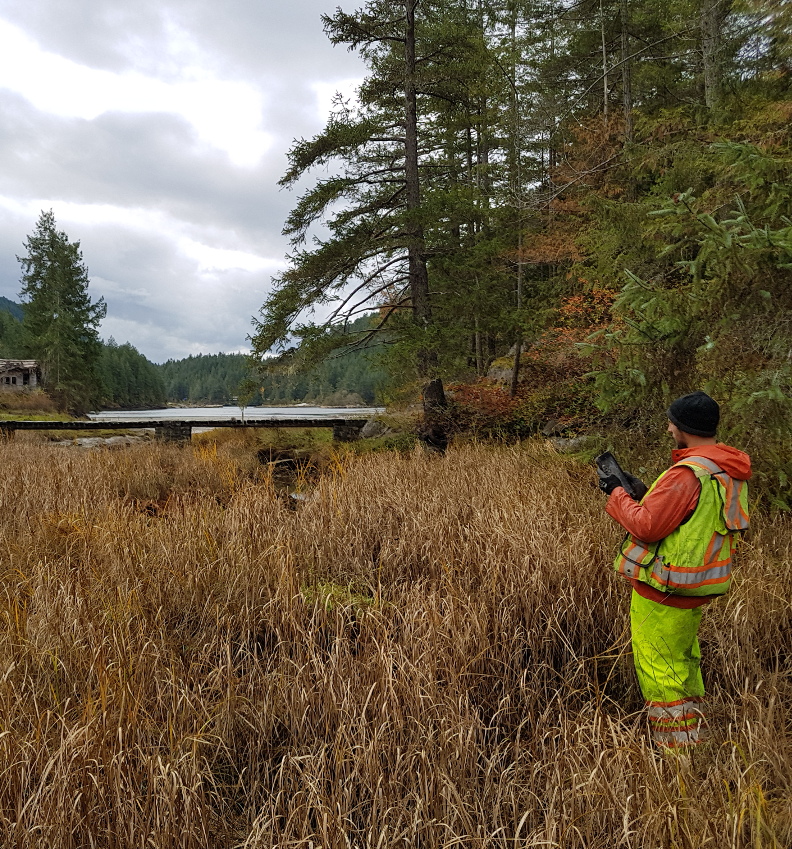
Archaeology
Inlailawatash brings unique perspective and experience to Canadian archaeology and First Nations cultural heritage projects. Our work ensures that historic and ancient indigenous villages, sacred sites, place names, storied landscapes, and other types of cultural features and material evidence are treated with respect and sensitivity and managed in both culturally relevant and scientifically appropriate ways. Our archaeologists are Registered Professional Archaeologists (RPA). We employ Heritage Conservation Act permit-holders who are in good standing with the British Columbia Archaeology Branch, and we provide project reports to Branch standards.
We Offer
Archaeological assessment and investigation
Project management
Project scope and design
Provincial (Heritage Conservation Act) and First Nations permit applications
Archaeological Overview Assessment (AOA)
Preliminary Field Reconnaissance (PFR)
Archaeological Impact Assessment (AIA)
Site alterations (SAP)
Artifact and material culture analysis
Historic and Pre-contact material culture analysis
Cataloguing and artifact type classification
Artifact illustration and imaging
Landscape modeling and mapping
Archaeological site mapping (GIS and LiDAR)
AIA and AOA mapping support
Archaeological potential modeling
Mapping to BC Archaeology Branch standards
Report writing
Technical reports (AOA, AIA, SAP)
Letter reports
Community reports
Management plans and policy papers
Research and Training
Ethnohistoric archival research
Ethnographic contemporary research
Archaeological repository research and analysis
Remote Access to Archaeological Data (RAAD search)
Archaeological and CMT Inventory Training for Crew members (RISC)



Featured Projects

Pender Harbour Shoreline Survey
An archaeological survey for the Pender Harbour Dock Assessment Project was conducted by Inlailawatash in the territory of interest for the shíshálh Nation. The survey was carried out to assess the impacts of docks, marinas, and associated developments on both recorded and unrecorded archaeological sites and features. A 100% surface pedestrian survey involved walking and boating almost 60 km of shoreline on the mainland and ten offshore islands. In total, 66 previously recorded archaeological sites were assessed, and 47 previously unrecorded archaeological features were identified. The site density and shoreline locations of the sites present substantial challenges to managing the protection of archaeological sites in Pender Harbour.

Eagle Mountain - Woodfibre Gas Pipeline Project
The AOA and AIA for Fortis BC evaluated site potential, drawing on many datasets including indigenous place names, ethnography, site inventories, LiDAR, aerial photos, and potential models. The survey involved shovel testing along a 52km corridor. 8 sites were found and all potential archaeological landforms were mapped. Methods of analysis included GIS site mapping, XRF lithic sourcing, lithic typology, paleobotany, zooarchaeology, micromorphology, and radiocarbon dating. The data gathered revealed new insight into Coast Salish high-elevation landscape use and inter-village travel corridors. This work was presented to an academic audience at the Northwest Coast Anthropology Conference in Eugene, Oregon.
South Shore Corridor
Working with the Gateway Project for Port Metro Vancouver, Inlailawatash completed a comprehensive Archaeological Overview Assessment (AOA) of the South Shore Corridor on Burrard Inlet. The objective of this assessment was to determine the likelihood of encountering unknown archaeological sites in the area, and to inform mitigation strategies early in project development. Our assessment included examining historical aerial photographs, reviewing the provincial database of recorded archaeological sites, compiling indigenous place names, conducting extensive ethnohistoric research, and estimating landform ages based on vegetation communities. Our team used this AOA to inform two subsequent Archaeological Impact Assessments (AIAs).

Nanwakolas Council and Guardians Program
Inlailawatash is working with the Nanwakolas Council and British Columbia towards innovative solutions for heritage management of ecological and cultural values within the traditional territories of Kwakwaka’wakw and K’ómoks communities. We have completed a desk-top archaeological assessment, an archaeological instruction manual, several weeks of field training Guardian Watchmen, a vulnerability and sensitivity report, an Action Plan report, a field verification report, and a community report based on on-going archaeological investigations at the north end of Vancouver Island and offshore islands. These studies are directly informing archaeological management strategies to record and protect culturally important sites as well as empowering local Guardian programs within their territories.
Through community-based archaeological projects in the Pacific Northwest we have collected and reported on information about past ecosystems and the people who have lived here for more than 10,000 years. As a First Nation-owned company a founding value of our business practice is that revenue generated from archaeology and heritage-based projects is returned to the Tsleil-Waututh community for economic development.
